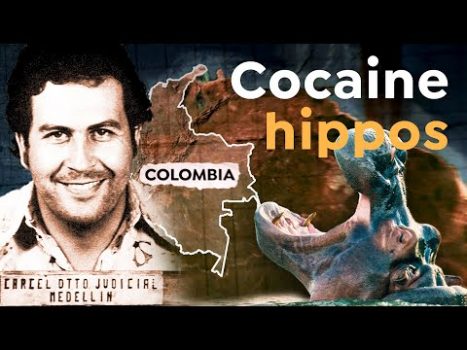Why Escobar’s Hippo Legacy Still Haunts Colombia

Why smuggle a hippo through Colombian cartel lands?
This improbable – and dangerous task is perhaps the best way of tackling the wild legacy left by Pablo Escobar, the country’s most notorious drug lord. Because the four hippos he imported in the 1980s and abandoned in his hacienda zoo have become a serious cause for environmental concern…
In this video, we explore Colombia’s unusual wildlife problem: hippos, which are native to sub-Saharan Africa, are flourishing in the tropical heat near Medellín. But what impact are they really having on the local ecosystem? And is there any way to halt a biodiversity calamity?
What does the presence of Escobar’s hippos represent in terms of the drug lord’s legacy in Colombia?
For years, the name Pablo Escobar has been synonymous with drug trafficking, violence, and corruption in Colombia. However, one of the lesser-known legacies of his reign as the leader of the Medellin Cartel is the presence of hippos in the country. After Escobar’s death in 1993, the hippos that he had imported as part of his private zoo were left to roam freely, creating a complex ecological and social problem that continues to challenge Colombia today.
Escobar’s hippos were originally brought to Colombia as part of his grand plan for a private zoo on his sprawling estate, Hacienda Nápoles. Along with lions, tigers, and other exotic animals, the hippos were meant to showcase the power and wealth of the drug lord, who was one of the richest men in the world at the height of his reign. When Escobar was killed in a police shootout in 1993, the animals were abandoned, left to fend for themselves in the humid, riverine habitat of the Magdalena Valley.
In the ensuing decades, the hippos of Hacienda Nápoles bred and thrived, with their numbers increasing from the original four to an estimated 80 to 100 individuals today. The animals have become a major attraction for tourists, who come to see the spectacle of the “cocaine hippos” in their natural habitat. However, the presence of these animals has also created a host of problems for the communities that live near the Magdalena River.
Hippos are not native to South America and are considered an invasive species in Colombia. They are highly territorial and aggressive animals, capable of trampling humans and causing severe damage to crops and infrastructure. In recent years, there have been reports of hippos attacking fishermen, destroying boats, and even invading swimming pools in nearby towns. Local officials have struggled to find a solution to this problem, as the animals are protected as a heritage species under Colombian law.
The impact of the hippos on the environment is also a cause for concern. They compete with native species for resources and can have a devastating effect on local ecosystems. The Magdalena River, where the hippos live, is already heavily polluted and has suffered from decades of neglect and overuse. The presence of these large herbivores only exacerbates the ecological problems in the region.
Escobar’s hippos have become a symbol of the complex legacy of the drug lord in Colombia. They represent the unintended consequences of his grandiose ambitions and the ongoing challenges that the country faces in terms of environmental degradation, animal welfare, and public safety. The hippos have also become a source of fascination and intrigue, spurring debates about their fate and their place in Colombian culture.
As Colombia continues to grapple with the impact of Escobar’s legacy, the hippos of Hacienda Nápoles stand as a reminder of the unintended consequences of crime and corruption. They represent a challenge that requires creative solutions and a commitment to preserving the natural heritage of this beautiful and troubled country.









Escaping the Rent Trap – Simple Living In A Lotus Belle Tent
CLEAREST WATER EVER | Catch And Cook
Cultivating Gourmet and Medicinal Mushrooms
How this ‘invisibility cloak’ material is made and how it works
100 Years of Controversial Fashion | Glamour